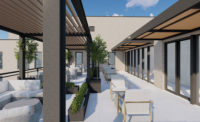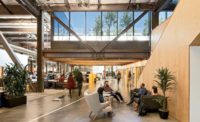Bringing Good Design to Affordable Housing
Bay Area architects see their affordable housing work as part of a long tradition of progressive culture and urbanism.

Bringing Good Design to Affordable Housing
Photo © Brian Rose

Bringing Good Design to Affordable Housing
Photo © Brian Rose

Bringing Good Design to Affordable Housing
Photo © Brian Rose

Bringing Good Design to Affordable Housing
Photo © Brian Rose

Bringing Good Design to Affordable Housing
Photo © Brian Rose

Bringing Good Design to Affordable Housing
Photo © Tim Griffith

Bringing Good Design to Affordable Housing
Photo © Tim Griffith

Bringing Good Design to Affordable Housing

Bringing Good Design to Affordable Housing

Bringing Good Design to Affordable Housing
Image courtesy WRT/Solomon E.T.C.

Bringing Good Design to Affordable Housing
Photo © Tim Griffith






Post a comment to this article
Report Abusive Comment